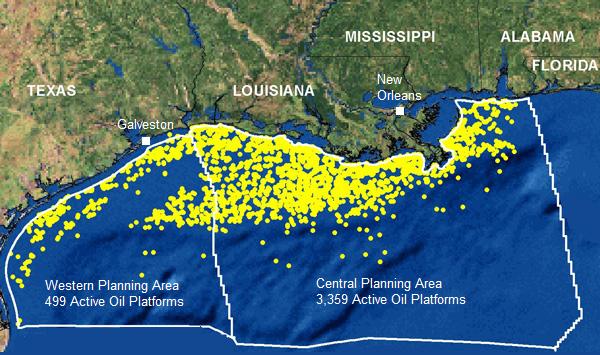49 weeks have passed since the Deepwater Horizon oil rig exploded and sank into the Gulf of Mexico, resulting in millions of barrels of oil leaking into the Gulf, and yet the same fatal flaws that doomed that rig are still present in most offshore oil rigs in the Gulf of Mexico.
The reason that BP’s Macondo well managed to leak oil into the Gulf was because the blowout preventer on the Deepwater Horizon rig malfunctioned, meaning that the preventer could not blow up and seal off the well. But the Deepwater Horizon is not the only rig that contained a malfunctioning blowout preventer. According to new reports, blowout preventers on rigs throughout the Gulf have not been properly inspected or maintained, meaning that another rig explosion could result in more oil in the Gulf.
Steve LeVine writing for Foreign Policy outlines the problem:
“The oil industry has known for many years that the blowout preventers work in only a fraction of accidents, and that they have been prone to failure, especially as drilling has moved into deeper water, requiring thicker, tougher pipe. In 2004, a study commissioned by federal regulators found that only three of 14 newly built rigs had blowout preventers that could squeeze off and cut the pipe at the water pressure likely to be experienced at the equipment’s maximum water depth.”
But the flawed designs in the blowout preventers go even deeper than that. As Rep. Bart Stupak (D-MI) noted in a hearing last year as Chairman of the Oversight and Investigations of the BP blowout case:
“We uncovered an astonishing document that Transocean prepared in 2001, when it bought the blowout preventer from Cameron. I would like to display the executive summary from this document. It says there are 260 separate “failure modes” that “could require pulling of the BOP.””
So how could oil rigs get away with having faulty emergency equipment installed? Weren’t there any federal regulators inspecting these rigs? The answer is both “yes” and “no.” MMS regulators were required to inspect all aspects of oil rigs operating in American waters, but when it came time to do the reports, they decided that it would be best to just let the rigs – the oil companies who own the rigs, that is – fill out the inspection reports themselves in pencil, and then MMS officials would simply trace over their pencil marks in ink. MMS inspectors took the oil companies’ words as truth, and submitted these reports for filing.
No real inspections, and no accountability.
But if you think that the story ends with oil rigs operating in the Gulf of Mexico with faulty equipment, then think again. Believe it or not, there are actually bigger problems in the water than malfunctioning safety equipment. Reports from last summer identified 27,000 abandoned oil wells littered across the Gulf of Mexico. And these wells don’t even have the benefit of a cursory oil company-sponsored inspection – these wells have remained untouched for years, and no one knows if they are properly sealed off and secure.
To make things worse, there are an additional 3,500 “temporarily abandoned” wells in the Gulf. By declaring a well “temporarily abandoned,” companies can avoid all of the requirements that are supposed to ensure the safety of “permanently abandoned” wells, making these 3,500 the biggest time bombs in the Gulf.
With soaring gas prices hitting every American in the wallet pretty hard, the renewed calls for “drill baby, drill” are becoming louder and louder. The shock from the BP blowout has worn off for most of the public, but rest assured, those of us like myself living on the Gulf Coast are reminded of the dangers every day – with every tar ball that rolls ashore, with every new oil sheen spotted in the water – we remember.
Subscribe to our newsletter
Stay up to date with DeSmog news and alerts






